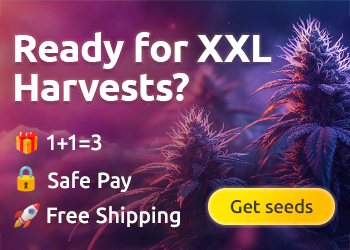Missouri’s cannabis industry is racing against the clock to comply with the state’s new plain packaging requirements, set to go into effect on September 1.

(Photo credit: WeedMaps).
This mandate comes over a year after the rule was first introduced, reflecting a broader movement towards plain packaging that has long been advocated in the tobacco industry to reduce the appeal of products to younger consumers.
The push for plain packaging, characterized by minimal colors and designs, puts Missouri among the first states to implement similar requirements in the recreational marijuana market, following the approval of a constitutional amendment in 2022 that legalized adult-use cannabis. The amendment included a provision stipulating that marijuana-related packaging and labels “shall not be made to be attractive to children.”
Under the new state regulations, marijuana packaging must adhere to strict guidelines: only one primary color is allowed, with the option of incorporating up to two logos or symbols in different colors. This marks a significant shift from previous practices and aligns with the broader public health objective of making cannabis products less enticing to minors.
“This approach to packaging is something we’re all familiar with,” said Amy Moore, director of Missouri’s Division of Cannabis Regulation, during a legislative hearing last year. “Think about the difference between the cereal aisle and tobacco packaging or over-the-counter medicines.”
Originally, the deadline for compliance was set for May 1. However, concerns about potential delays in global shipping led regulators to extend the deadline to September 1, giving companies more time to adjust to the new requirements. As of that date, all marijuana products must be packaged in designs approved by the division before being sent to dispensaries. Dispensaries, however, will be allowed to sell existing non-compliant products until November 1.
One significant change in the new regulations is the requirement for pre-approval of all labels by the division, a process not previously mandated under medical marijuana rules. According to Nick Rinella, CEO of Hippos Cannabis, this has led to delays. “The state just doesn’t have the manpower to go through and approve them,” Rinella said. “And until they’re approved, they can’t go onto the shelves in their new packaging.”
Since the approval process began on September 1, 2023, the Division of Cannabis Regulation has received nearly 150,000 submissions, with half of those coming in the last 60 days, according to Lisa Cox, a spokeswoman for the division. Cox emphasized that all applications are being processed within 60 days and that licensees have had ample time to prepare for the new rules. “Licensees have had a year to submit applications for approval,” she said, “and five months’ notice that they should not expect another extension.”
The state constitution imposes additional restrictions on packaging for edible marijuana-infused products, particularly those resembling commercially sold candy. Violations of these regulations can result in fines of up to $5,000 and the loss of a business license.
Missouri’s new packaging rules are part of a broader set of cannabis regulations that took effect on July 30, 2023. Initially, the rules proposed only a single color for packaging, which drew significant backlash from the Missouri Cannabis Trade Association (MoCann Trade). The association argued that marijuana businesses had already invested millions in packaging designs and that eye-catching packaging is crucial for effective product promotion.
In response to industry pushback, the Division of Cannabis Regulation revised the rules to allow limited colors and included a provision for QR codes on labels, directing consumers to websites for more information.
Missouri now joins a small group of states, including Connecticut, Massachusetts, and New Jersey, that require plain packaging for adult-use cannabis products. Moore believes these rules reflect the will of the voters who approved the constitutional amendment and emphasize stricter safety measures for children compared to those established under the 2018 medical marijuana legalization.
“We have to recognize that,” Moore stated, “and say, ‘Apparently we’re to do more, we’re to do better for children and for health.’”






